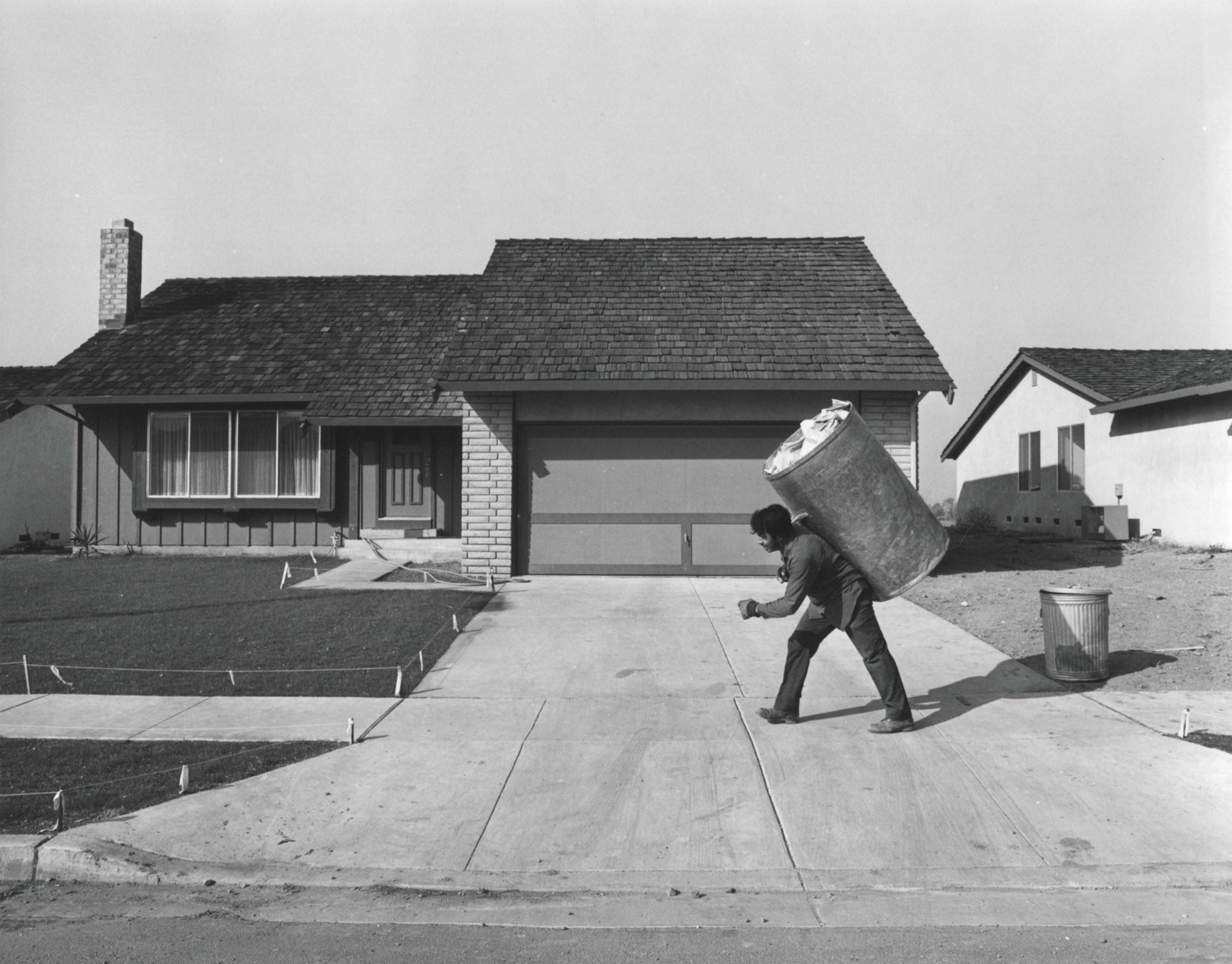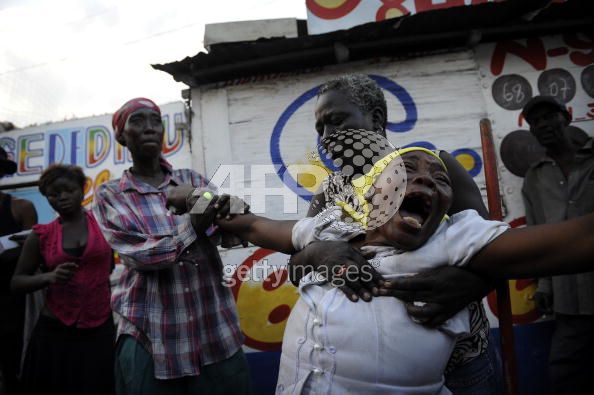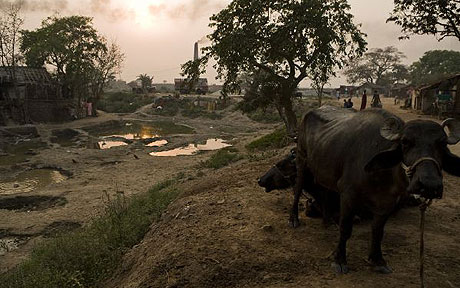
Gerry McCarthy has been doing some prep work for Vancouver that he has come up with all on his own, including gaff taping large storage bags of ice to his crotch.
The hoards of photographers and wanna-be photographers, most eyeing each other and copying each other so that they may not get ‘left behind’, that have descended on Haiti since the devastating earthquake there remind me why I have felt so alienated and disconnected from this entire craft. The specious justifications of ‘bearing witness’ or that ‘…news pictures help drive a response of aid’, just no longer ring true.
Link: To Hear Or See An Haitian Once The Party Has Died Down « The Spinning Head
I have decided to offer a special small group workshop in Haiti focused on photographing the aftermath of the earthquake. Subjects covered will be working in disaster zones and other difficult and dangerous situations, survival and logistics in difficult
via ZORIAH – A PHOTOJOURNALIST AND WAR PHOTOGRAPHER’S BLOG: http://www.zoriah.net/blog/2010/02/photojournalism-workshops-haiti-earthquake-intimate-group-workshop.html
I have decided to offer a special small group workshop in Haiti focused on photographing the aftermath of the earthquake. Subjects covered will be working in disaster zones and other difficult and dangerous situations, survival and logistics in difficult environments, photograph people, working with NGO’s (Non Governmental Organizations) and aid organizations, editing and digital darkroom technique and marketing and making your stories available for the world to see.
By Jim Hughes More than any other practitioner, I think, Henri Cartier-Bresson has defined the art of small-camera photography. Defying categorization (that bane of any true original), H.C.-B., neither photojournalist nor documentarian, seemingly traverse
via The Online Photographer: http://theonlinephotographer.typepad.com/the_online_photographer/2010/01/hcb-the-invisible-man.html?utm_source=feedburner&utm_medium=feed&utm_campaign=Feed%3A+typepad%2FZSjz+%28The+Online+Photographer%29
“You must not photograph me!” he shrieked, his English suddenly crystal-clear. “No one is allowed to photograph me! Everyone must know that…”
A couple of weeks ago photographer Adam Patterson touched off a discussion on Lightstalkers about Geoffrey Hiller’s Verve documentary photography blog charging a new $50 administrative fee to photographers to include work on the site.
Link: PDNPulse: Verve Fee Policy Sparks Debate About Blog Business Models
USA Today photographer Jack Gruber posted on his Facebook page on Jan. 23 that “the light from his iPhone helped deliver a baby in the totally dark outside triage area of Port au Prince General Hospital last night.”
Link: PDNPulse: Photog’s iPhone Lights Birth in Haiti: The Rest of the Story

“The photographs for Suburbia weren’t done by accident. I put together a shooting script of events that I wanted to photograph… Christmas, Thanksgiving, Fourth of July, Birthdays, et cetera.”
By Cynthia Morrill, Ph.D.
In 1972, while a news photog
via AMERICAN SUBURB X: http://www.americansuburbx.com/2010/01/theory-bill-owens-suburbia-2000.html?utm_source=feedburner&utm_medium=feed&utm_campaign=Feed%3A+Americansuburb+%28AMERICANSUBURBX%29
In 1972, while a news photographer for the Livermore Independent, Bill Owens made the photographs that comprise Suburbia. Initially presented in a 1973 volume entitled, Suburbia, they have since been exhibited in museums and galleries in Europe and North America and become the classic photographic description of the American suburban dream.
From what I read and hear from people there seems to be a steadily growing discontent with the coverage of the Haiti earthquake.

PART ONE OF A SERIES OF POSTS DISCUSSING PHOTOGRAPHERS’ ACTIONS AND RESPONSES TO THE KILLING OF FABIENNE CHERISMA IN PORT-AU-PRINCE, HAITI ON THE 19TH JANUARY 2010. “The question is not…
via Prison Photography: http://prisonphotography.wordpress.com/2010/01/27/fabienne-cherisma/
There is a chance that Fabienne Cherisma could become a symbol of the Haitian earthquake and the problematic aftermath; that she become a tragic silhouette extending meaning far beyond the facts of her abrupt and unjust death.
This notion can be at once offensive and inevitable. If the visual rhetoric is going to play out as such, then if it is not Fabienne, it will be another victim.
What purpose could the emergence of a such a symbol serve?
The National Press Photographers Foundation (NPPF) officers and board are pleased to announce the addition of a new scholarship in the memory of Seattle Times photographer Jimi Lott.
Brauer: “I’m currently based in China, working on various long-term publications. I’m represented by Invision Images in Europe, Aurora Select in the US through a partnership with Invision, and Wonderful Machine in the US, as well. I get by selling stock, periodic assignments, corporate shoots now and again, and some web design on the side. I got here by sheer force of will, I suppose.”
many times pictures say more about who took them than they ever do about their subjects. I’m not sure my photographs have ever revealed much about people or places that others couldn’t understand on their own without the benefit of my work. But photography has revealed much to me about myself, and the discoveries are often painful.
Link: Exposed – The Boston Globe
via: duckrabbit
Why does it matter? We all know there was an earthquake. We all know that tens if not hundreds of thousands of lives have been lost. How will images that are slightly better, or slideshows that are properly edited, make…
Why does it matter? We all know there was an earthquake. We all know that tens if not hundreds of thousands of lives have been lost. How will images that are slightly better, or slideshows that are properly edited, make the situation in Haiti any better?
Last week it was suggested that the disaster in Haiti was of such a great magnitude that anyone on the ground with a cellphone could make lasting images that the rest of the world would never forget. Not likely, (I…
After thousands of images, on dozens of different sites, my initial reaction was confirmed. World shocking events such as this need to be properly documented by great photographers. I’m not even talking photojournalists here. Think of Joel Meyerowitz’s work on the World Trade Center as an example.
“There’s nothing ‘in a box’ that solves our requirements,” Straight said. “NPPA’s unique Web site needs – eCommerce and our contests and editorial content – will require customized development … as well as integrating the old with the new.”
“The wrong decision about what to do with their Web site has ruined many companies,” new board member Smiley Pool said. “The most difficult task [facing NPPA] is the development challenge,” Pool said.
Link: Board Approves $1.4m Budget, Plans For NPPA’s Future, Web Site
After spending the morning clicking through the latest photos from Haiti, I can’t seems to get my thoughts off of what is going on there. The images coming back spew a long list contradictory adjectives. Beautiful. Ugly. Revealing. Tragic. Hopeful. Insightful. Disgusting. Amazing. Every click of the mouse is another rectangle that holds more human suffering within the four walls of its shape that I don’t want to ever see again, and can’t get enough of.
Reminds me of this pack of war paparazzi. I’m well aware that coverage of disasters is chaotic and involves a huge crowd of reporters. Photojournalism isn’t just one photographer out in the middle of nowhere sending back photos, but it shouldn’t be a pack of hungry wolves descending on the latest victim to emerge from the rubble. The world needs to know about disaster and it takes an army of reporters to do that. The pictures from Haiti have likely been the a driving force behind the private and public relief donations.
Link: Like moths to a flame – so many cameras in Haiti | dvafoto
“The good news is that we made it through a really rough 18 months,” Straight said. “But don’t think we’ve seen the end of this. I think it’s going to continue. The bad news is that the recovery of our industry is going to be slower than the general public’s recovery, I think.”
Link: NPPA’s Executive Director Tells New Board “Good News, Bad News”

A groundbreaking initiative that brings photographers and NGOs together to campaign for change.
via Telegraph.co.uk: http://www.telegraph.co.uk/culture/photography/6995839/Common-Goals.html
‘You must also ensure you show the effect of the NGO’s work rather than just the vulnerable members of society and their stories,’ he says. ‘Providing such context is extremely important as otherwise you are just picturing misery without suggesting a solution – which in this case is the work of the NGO.’